In offset-litho, only 1 printing order made in 1935: parallel
watermark, symmetrical paper wire = 1E1.
However, several printing orders must have been made for the
bi-coloured, offset-litho printed stamps with "Servicio Oficial". They
have not been described by D.A. Bardi though......
"rubiera"]El 5c1E1t-SO y el 5c1E3-SO
El primer 5c Moreno 'Servicio Oficial' proviene de 1938 y esta
impreso sobre el papel 1E1 tipografiado, algo comun nuevo, pero no tan
comun usado.

Aqui esta cancelado en 1938.

Esta es una impresion de la plancha sucia.

El segundo 5c Moreno 'Servicio Oficial' es tipo offset sobre el
papel 1E3.

Aqui esta una variedad de plancha.


"rubiera"]El 1E4 5c Moreno 'Servicio Oficial'
Esta impresion es la mas comun de las cinco impresiones 'Servicio
Oficial.' El papel 1E4 parece tela. Estos sellos tienen agujeros de
perforacion pequeños.

Con O de 'SERVICIO' deformada.



Con segunda impresion como sombra. 

Fechada 1944.

No conozco esta marca postal.
(!img
[http://www.somestamps.com/images-arg3551/referencecollection/foro/200903/5c-SO/1E3-1E4/5c1E4-SO-02-4.jpg]
[ ]
"rubiera"]El 1E4 5c Moreno 'Servicio Oficial'
Esta impresion es la mas comun de las cinco impresiones 'Servicio
Oficial.' El papel 1E4 parece tela. Estos sellos tienen agujeros de
perforacion pequeños.

Con O de 'SERVICIO' deformada.



Con segunda impresion como sombra. 

Fechada 1944.

No conozco esta marca postal.

"rubiera"]El 2D Rayos Rectos difusos 5c 'Servicio
Oficial'
Este sello solo existe con esta sobrecarga. No es tan comun, y
algunas de las impresiones son sucias.


Menos comun es el sello con impresion limpia. Este tiene variedad
a la L de 'Oficial'



"rubiera"]El NGR 5c Moreno 'Servicio Oficial'
Este sello recibio poco uso postal. La mayoria de los que tengos
son nuevos.
Impresion limpia.

Descolorida, tipica.

L de 'Oficial' alargada.



"rubiera"]El 5c 1E1 de 1935

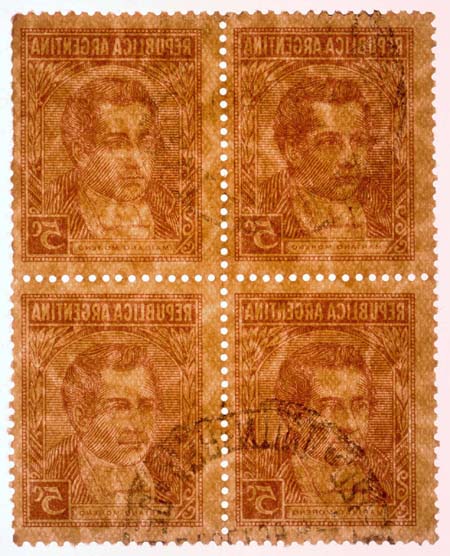
El 1E1 tipografiado de 1937
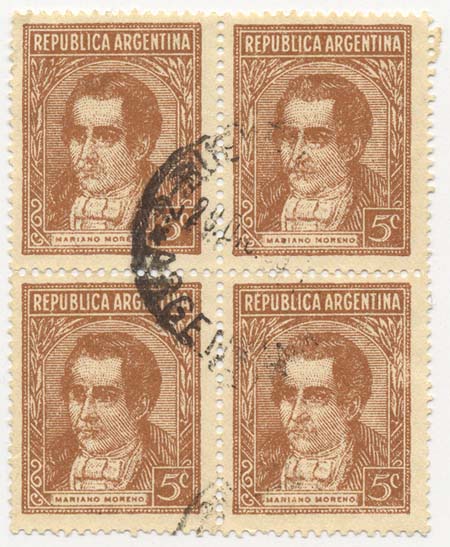
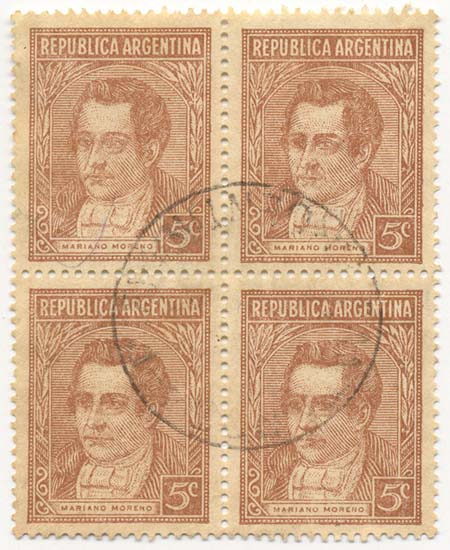
El 1E4 de libritos

El primer tizado de 1939
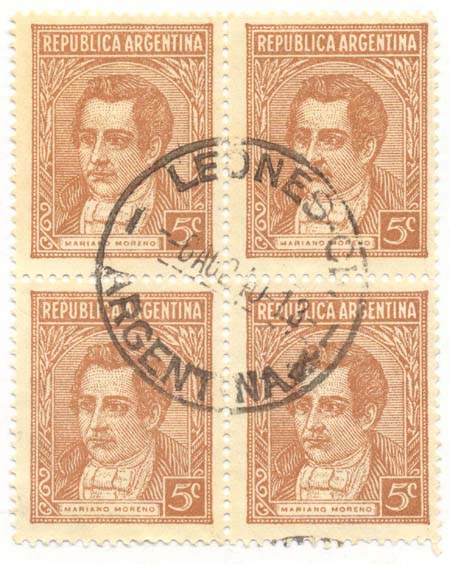
El segundo tizado de 1943
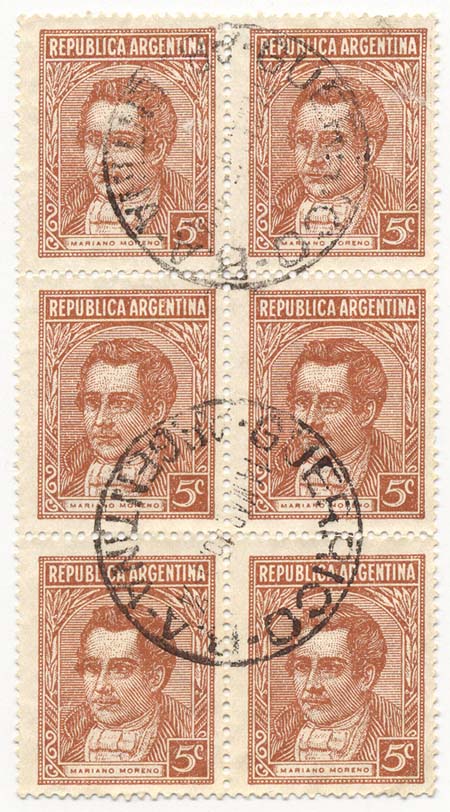
Esta impresion es la mas comun de las cinco impresiones 'Servicio
Oficial.'

Tony,
thanks for bringing all these scans to one place again!
What you show here is definitely an offset-litho, it may seem even
to be "tela" - do you have a scan of the back?
But the combination of 1E4 and "tela" is not likely as 1E4 is
always an orthogonal watermark and "tela" always a parallel one! How
do we tell the 1935 1E1 in offset-litho and the 1937 1E1 in typography
apart??? The latter one is not even mentioned in MT; the fact that the
first issue is in offset-litho hadn't been mentioned either!
1935 offset-litho:
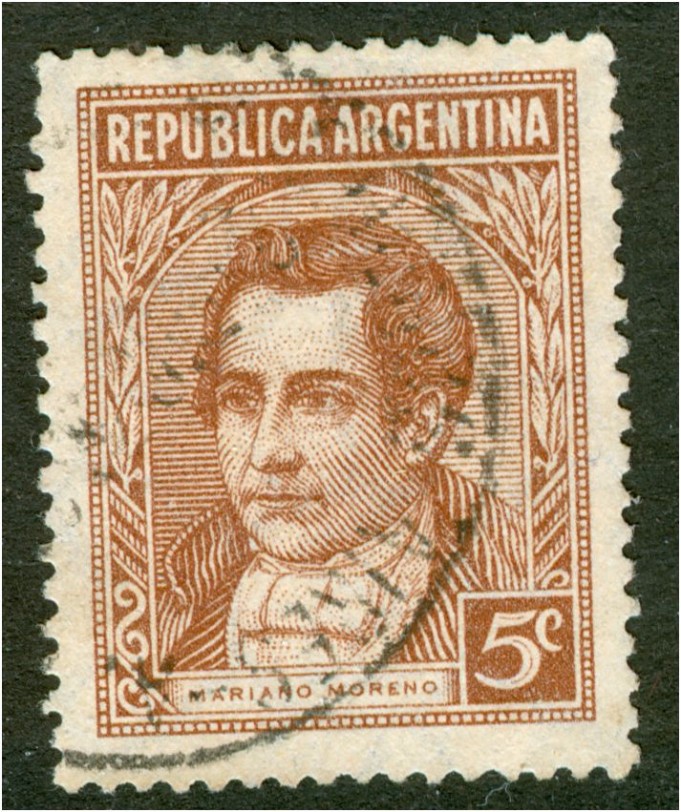
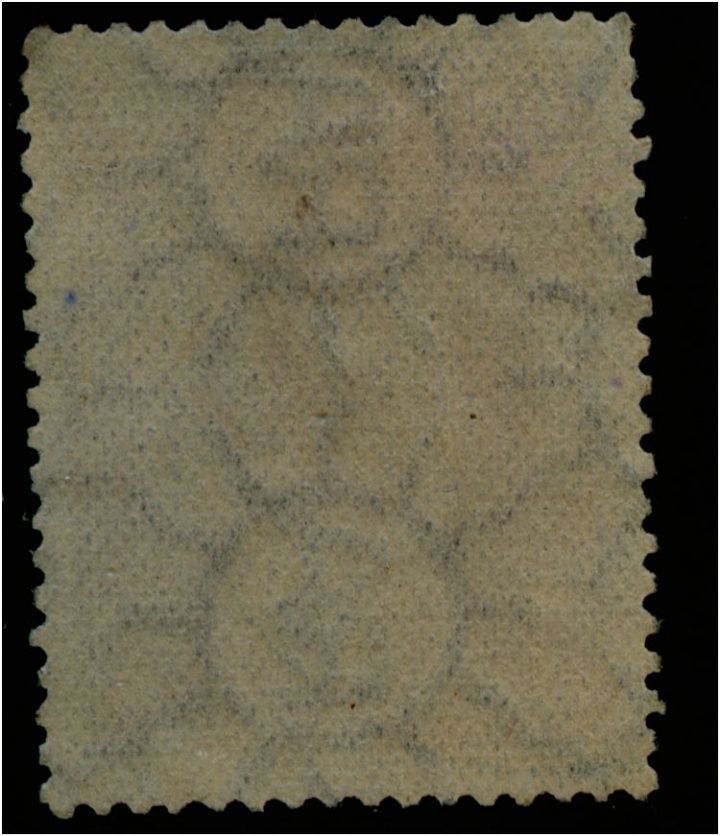
1937 typography:


The corners of the typography are almost always leaking and having
some sharp points; the offset-litho on the other hand is smooth:
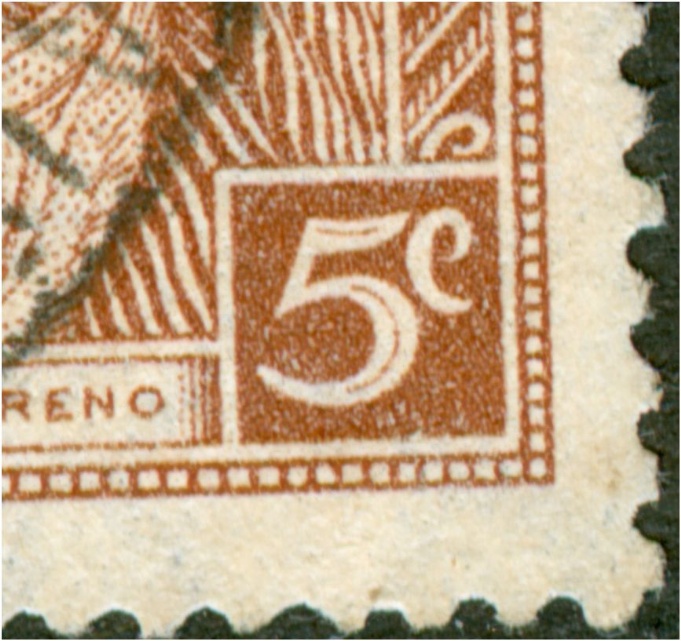
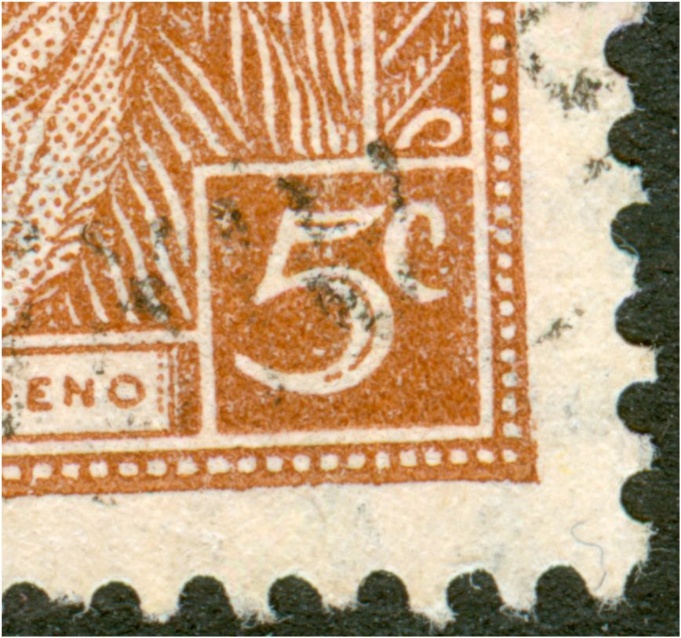
The offset-litho has delicate dots and lines; the typography has
rough dots and lines and is usually rather irregular as the ink seems
to be wandering whereever it wants to!
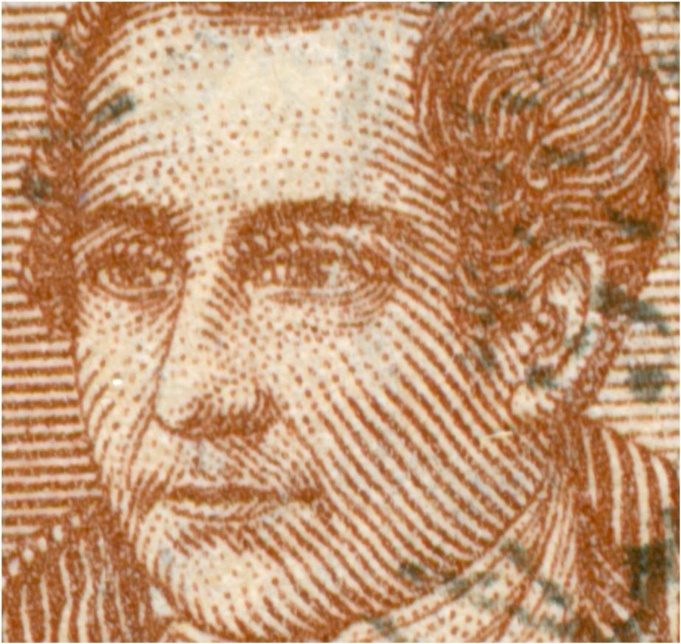
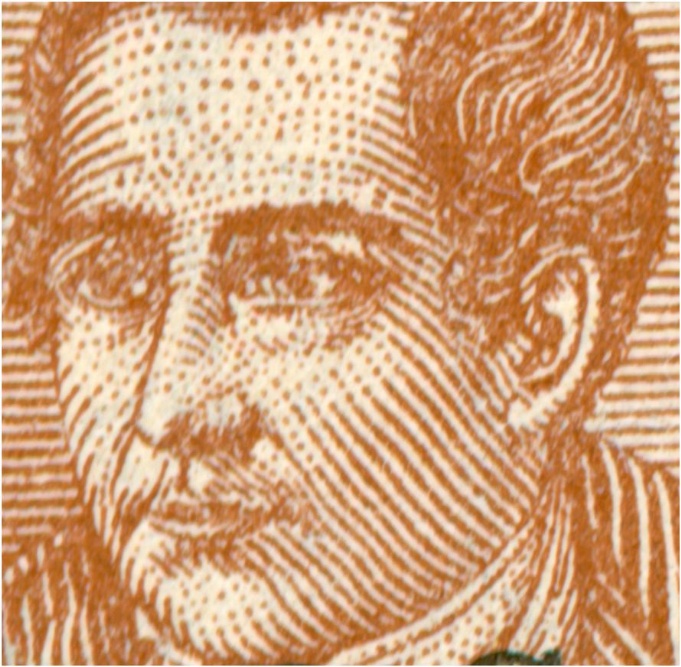
1940 typography on paper with an orthogonal watermark. All earlier
5c stamps without coating had been printed on paper with a parallel
watermark. According to Dario A. Bardi - who does mention the parallel
watermarkin typography in his overall table - an uncoated paper had
been used that shows some shiny spots and is referred to by Bardi as
"mate lustroso". I do not have a mint copy but indeed in the used
copies you may see some remnants of a varnish [barnizado]. What is
more important is that the watermark is orthogonal with a vertical
direction of paper so the line of AR is horizontal instead of vertical
as in the case of the parallel watermark :
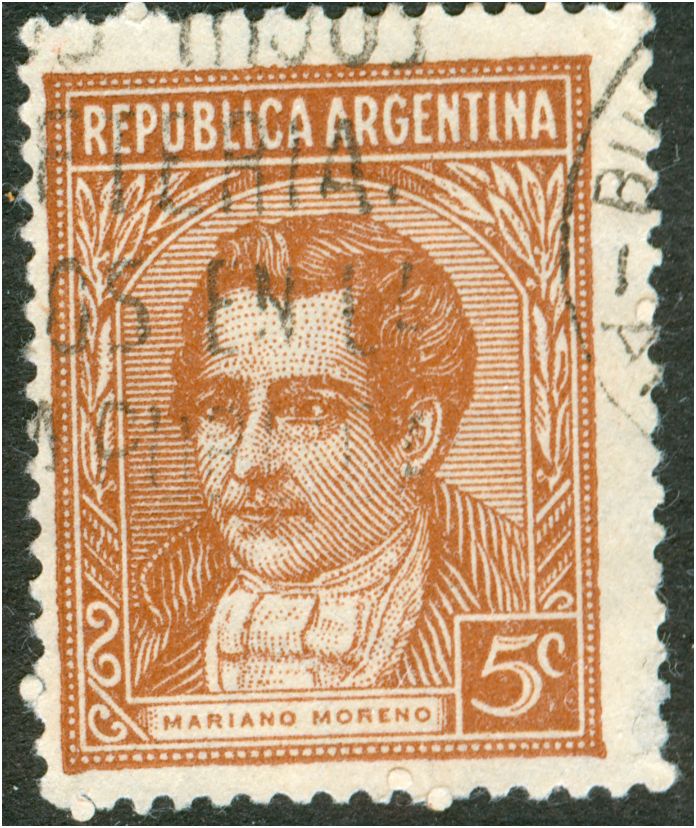

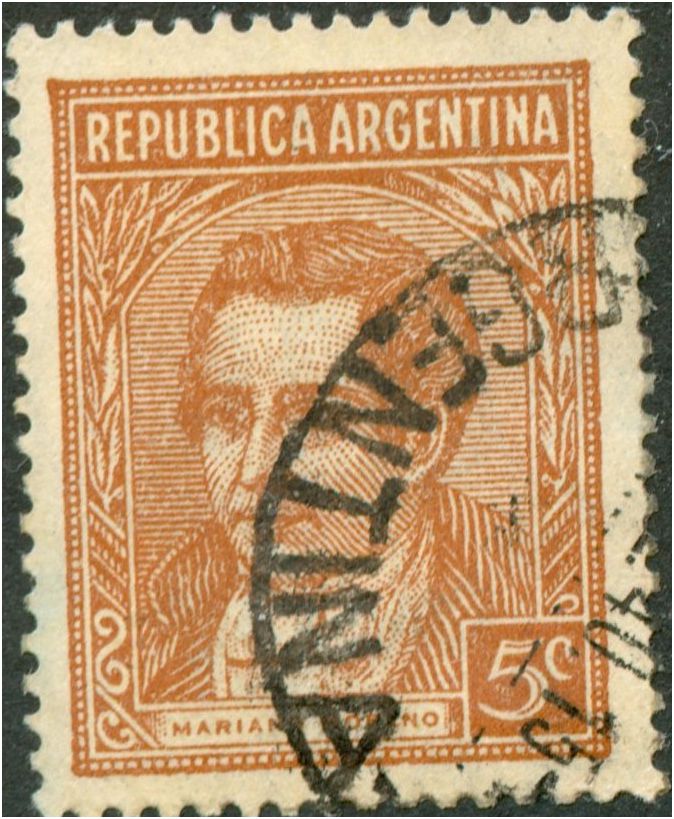
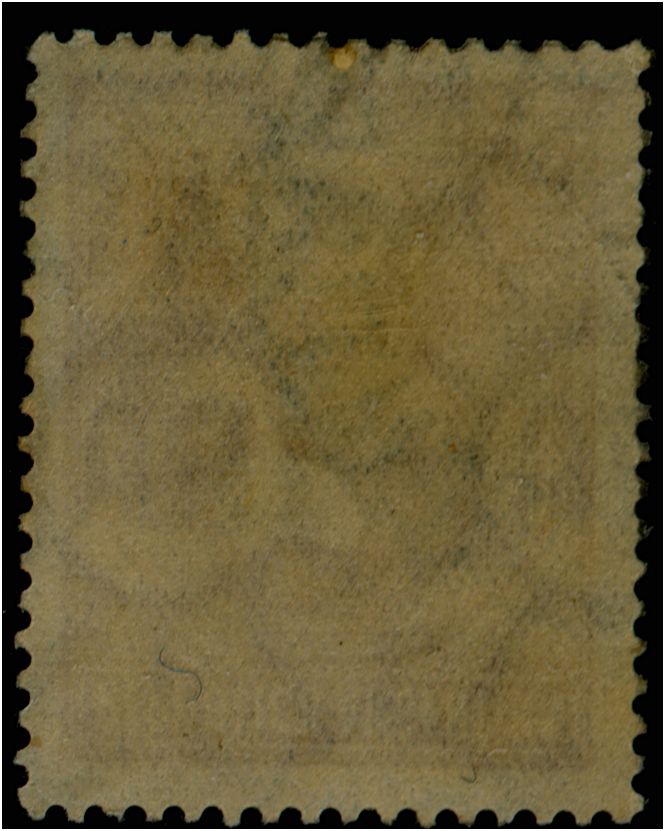
Also according to mr. Bardi these stamps are the only imported
papers with the transposed watermarks [filgranas traspuestas]. What is
meant here is that the back of the stamp has the felt side of the
paper and the front has the wire side. You can establish that yourself
by closely looking at the surface of the back. It is very smooth as in
most cases of the unwatermarked stamps [the "difusos" versus the
"nitidos"].
The later watermarks that stem from the local paper mills have
transposed watermarks predominantly! Practicallly everything from 1953
onwards has "traspuestas"! The consequence of this all - and I haven't
read that at Bardi's - is that the watermark has AR on the dandy-roll
instead of RA!!!!!
So generically we have the following watermarks:
1935 -parallel - RA on circumference of the dandy roll -
equilateral triangle 1937 - orthogonal - RA along the axis of the
dandy -roll - equilateral triangle 1940, 1953/57 - orthogonal -
AЯ along the axis of the dandy-roll - equilateral triangle 1948
- orthogonal - RA along the axis of the dandy-roll - isoceles triangle
- better known as "rayos rectos" or "rayos largos" All 4 generical
groups can be split up in sub-groups by measuring the diameters of the
sun, the length of the rays, the other properties of the paper [wire,
transposition, symmetry, UV-reaction, etc.].












































